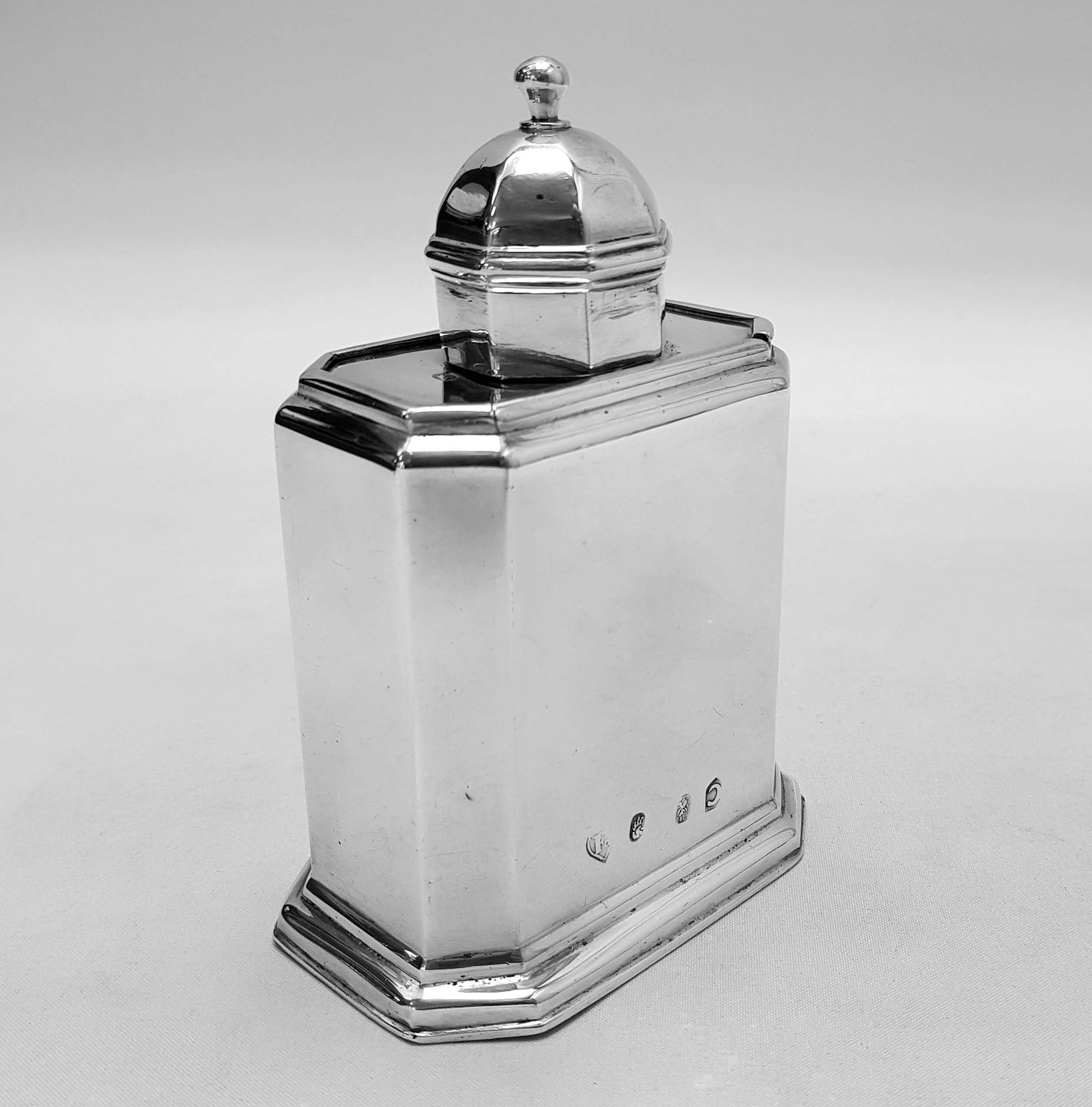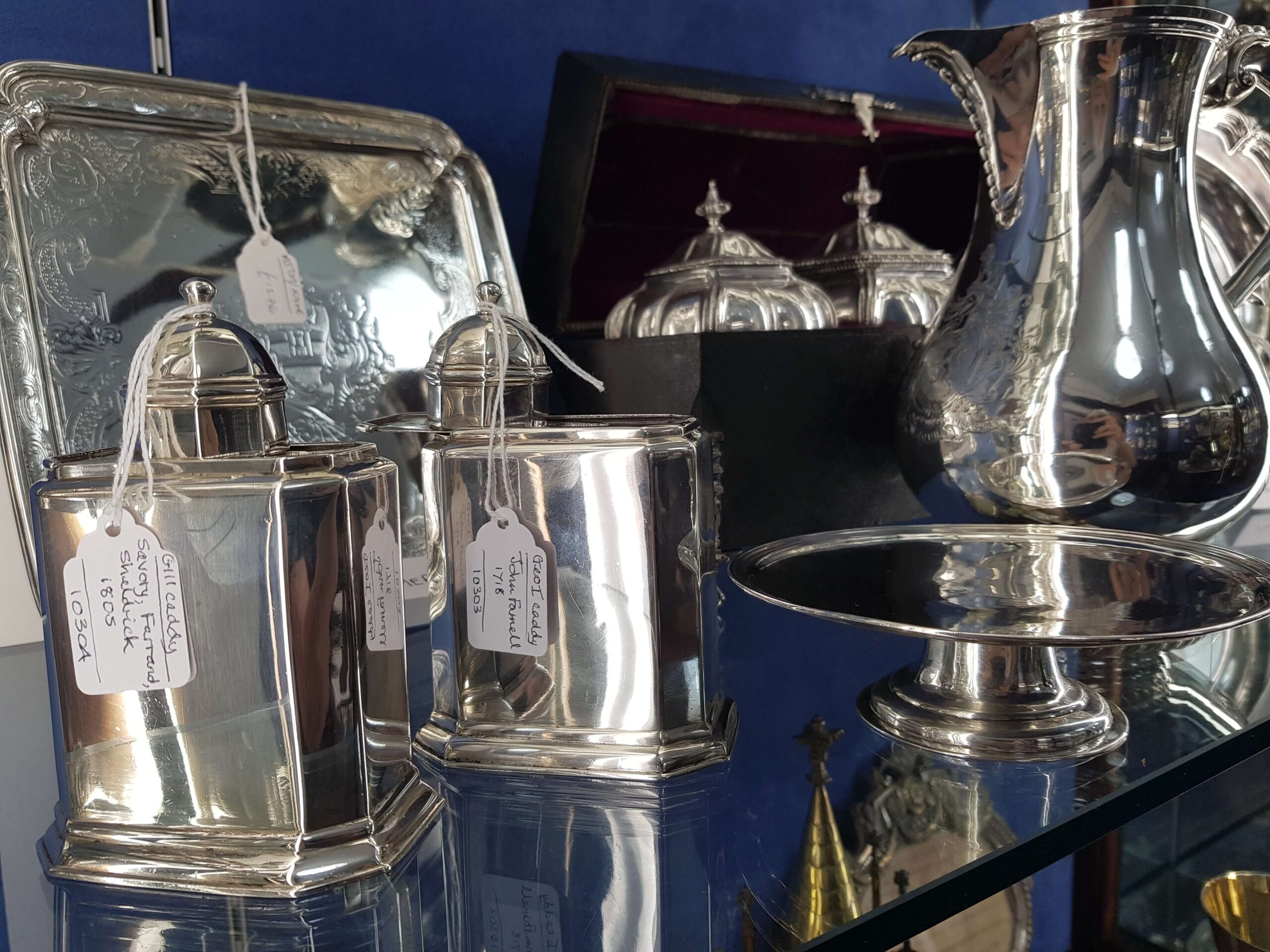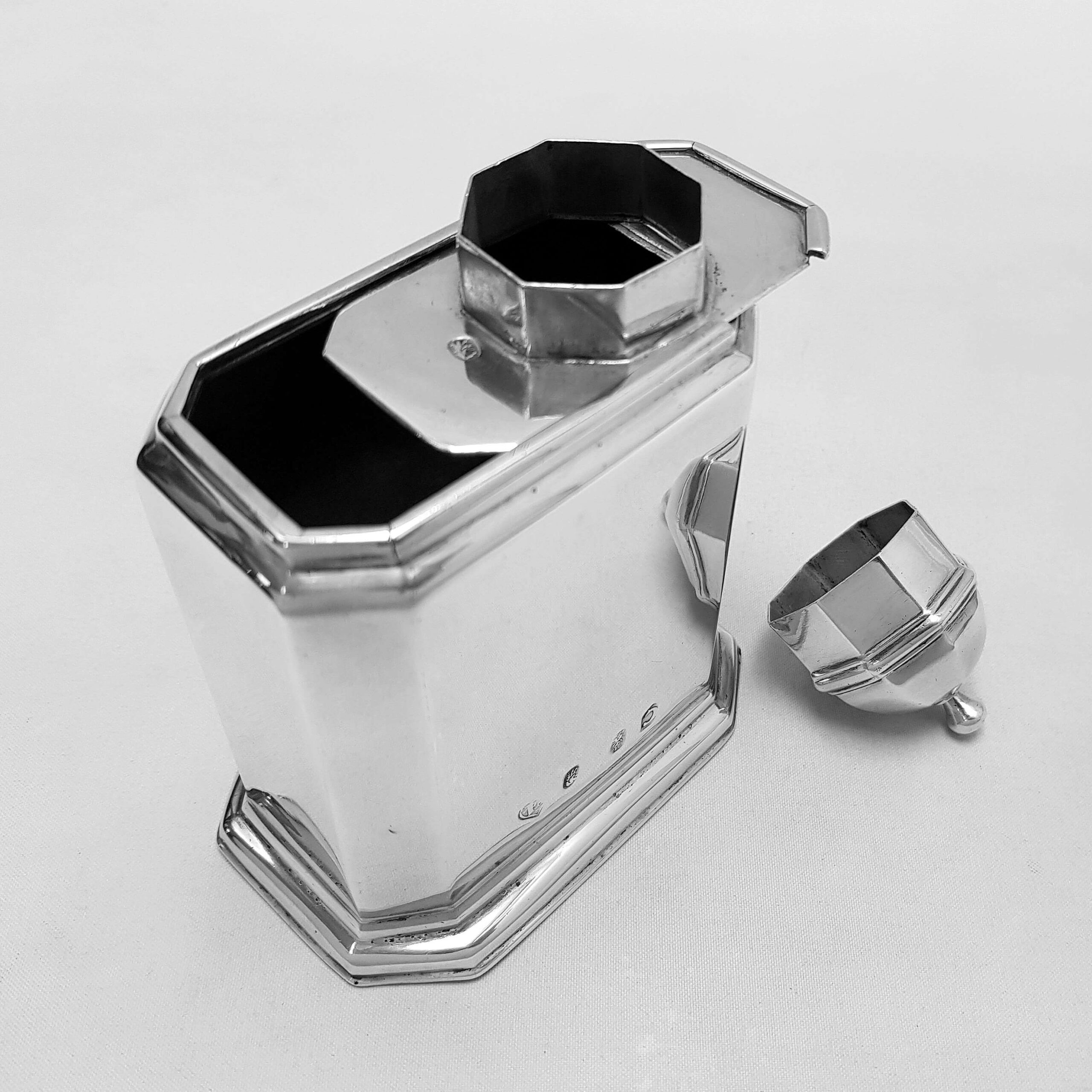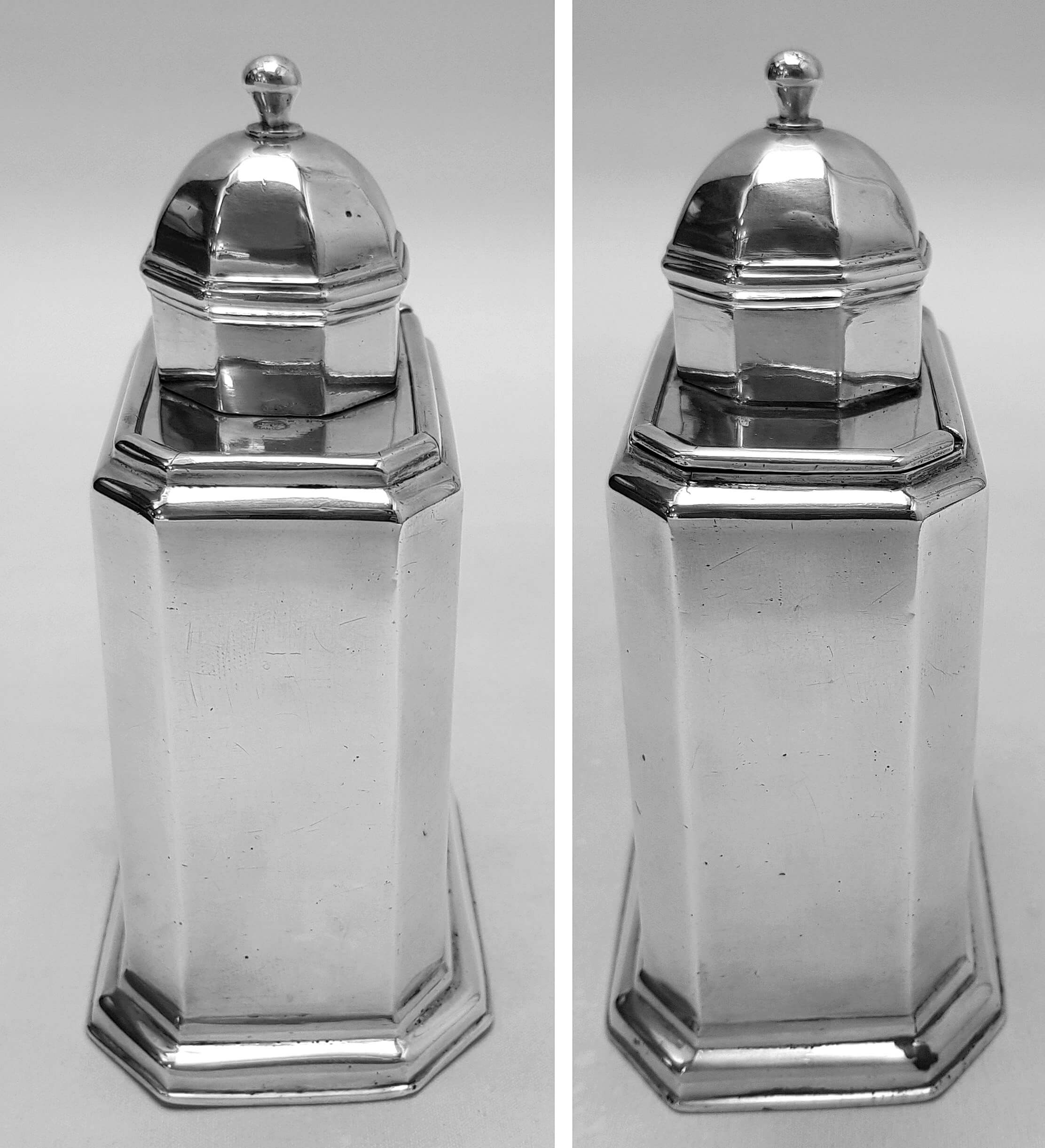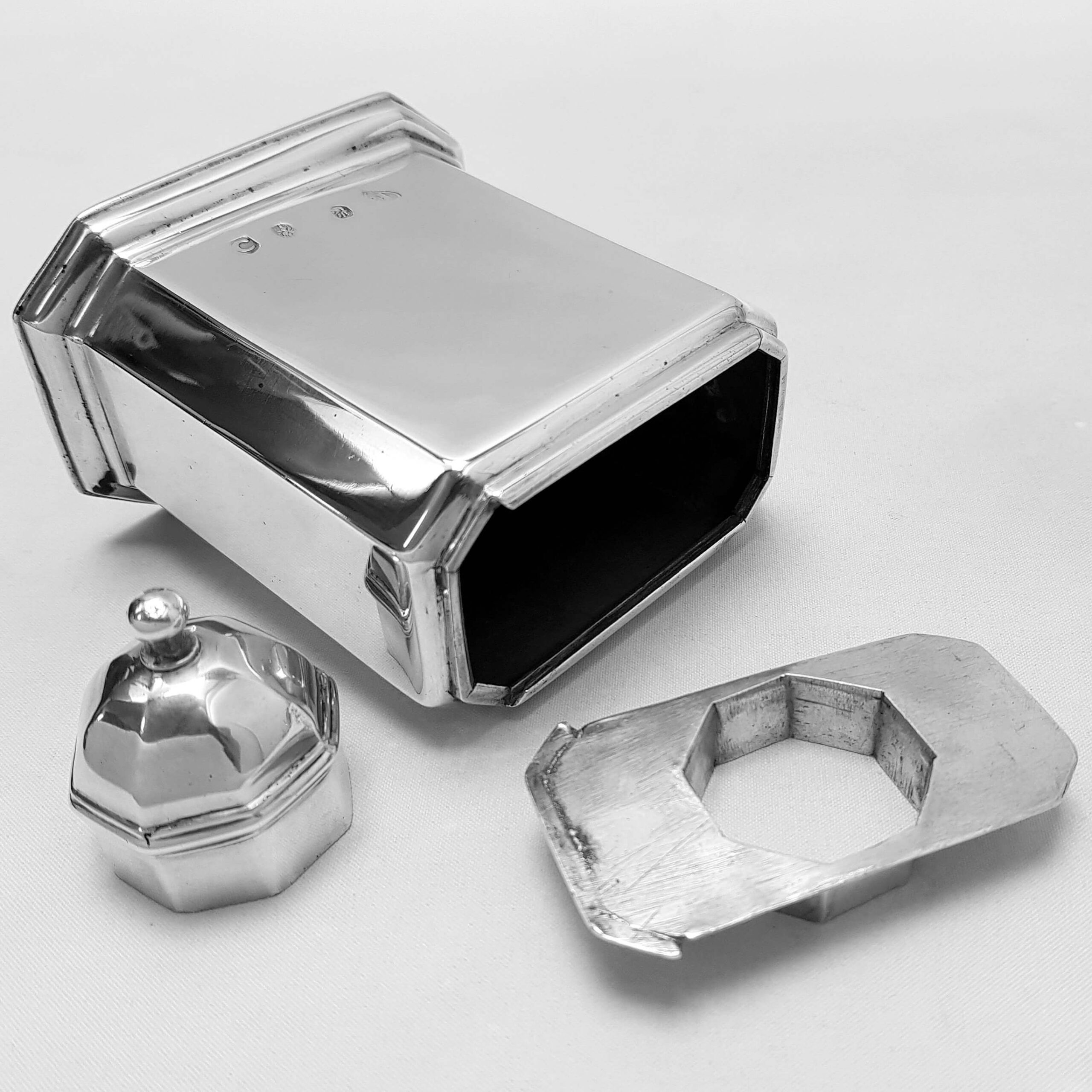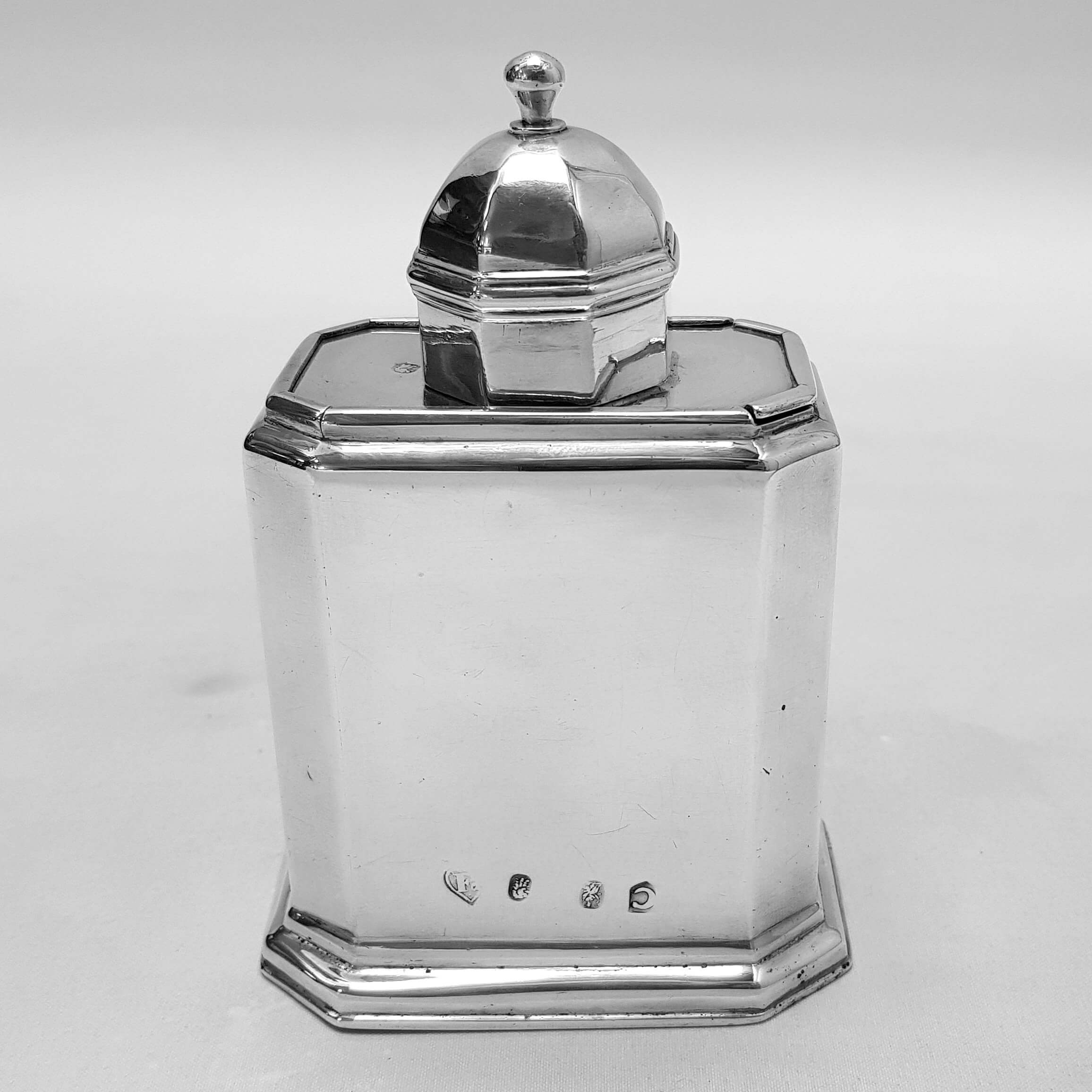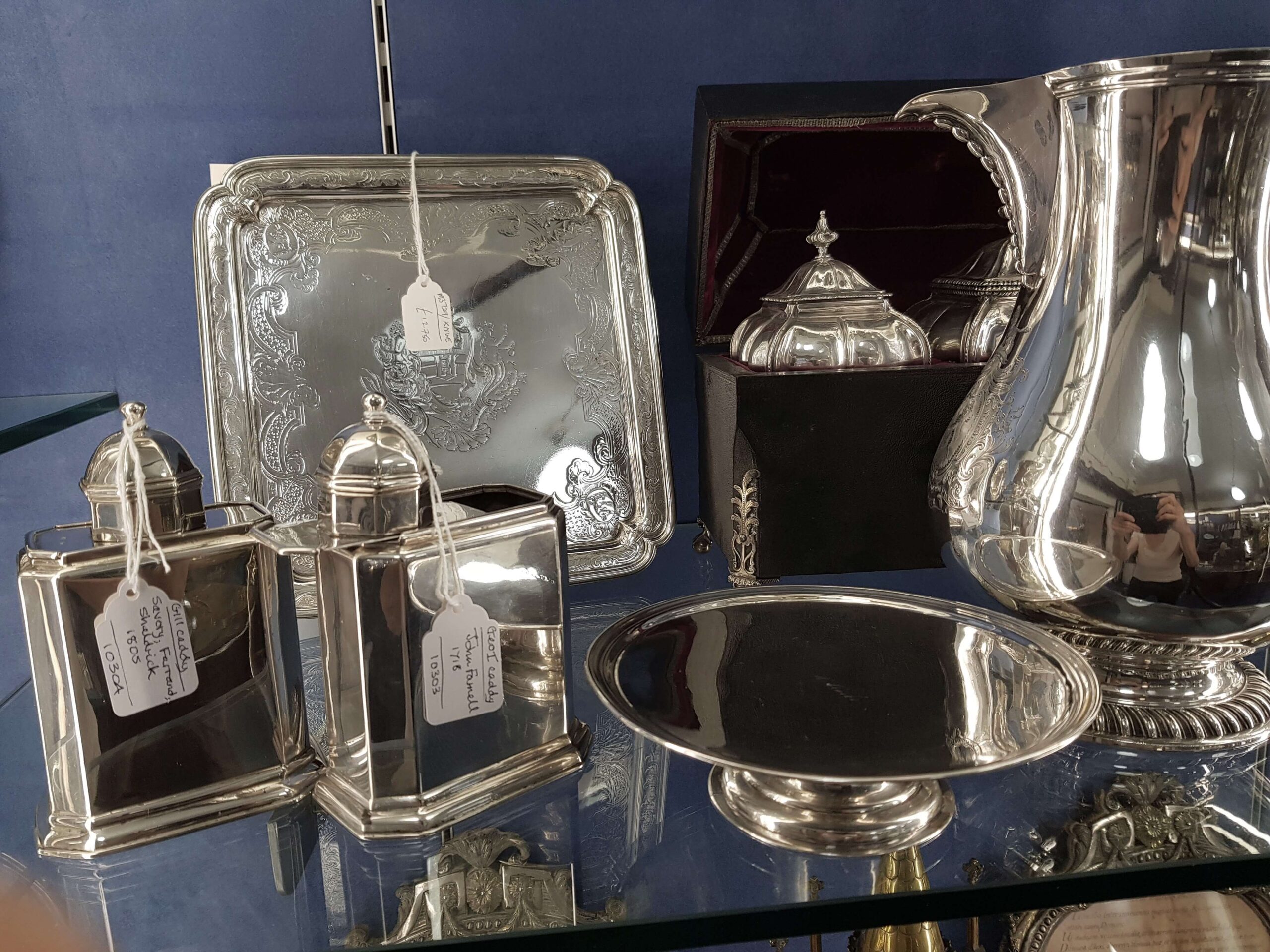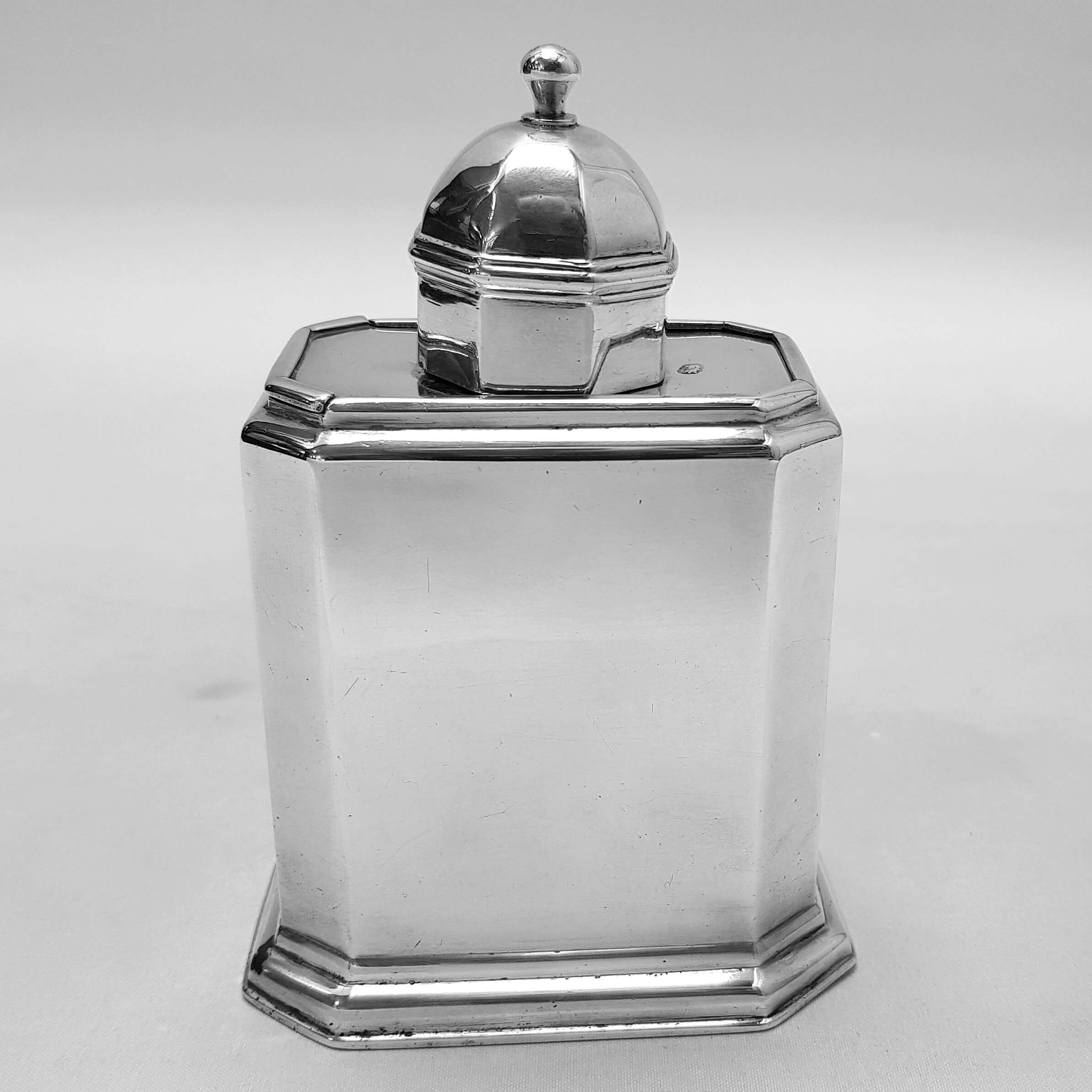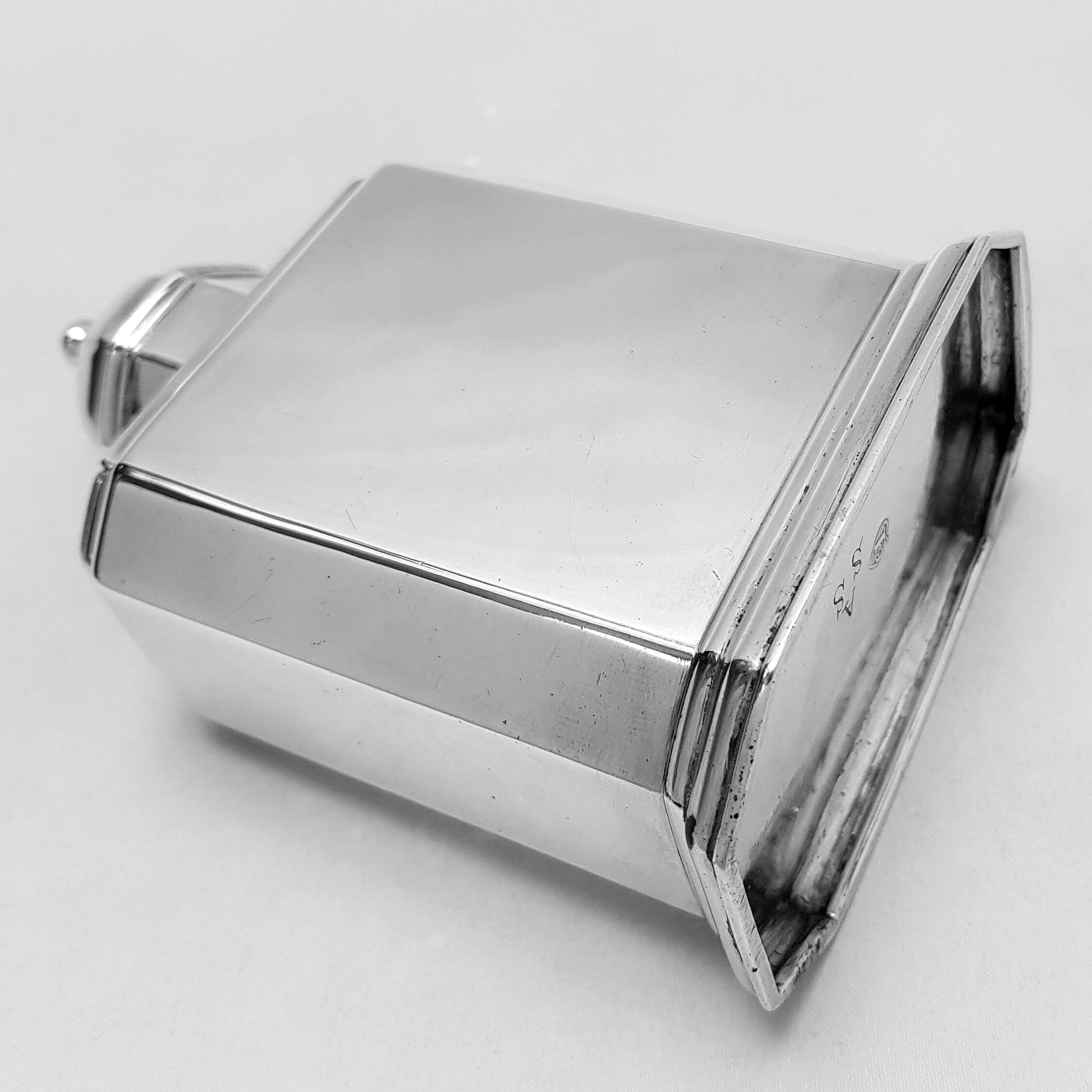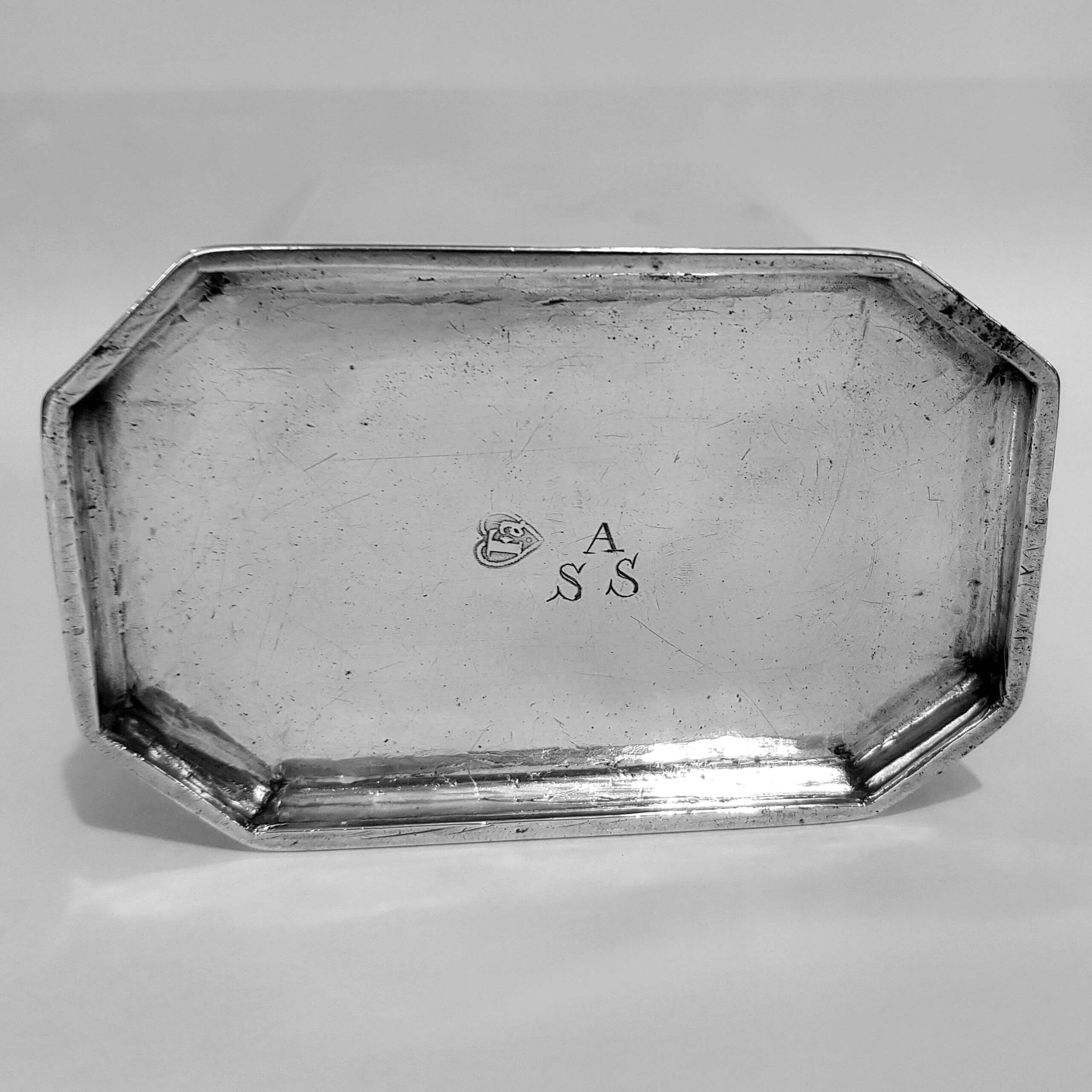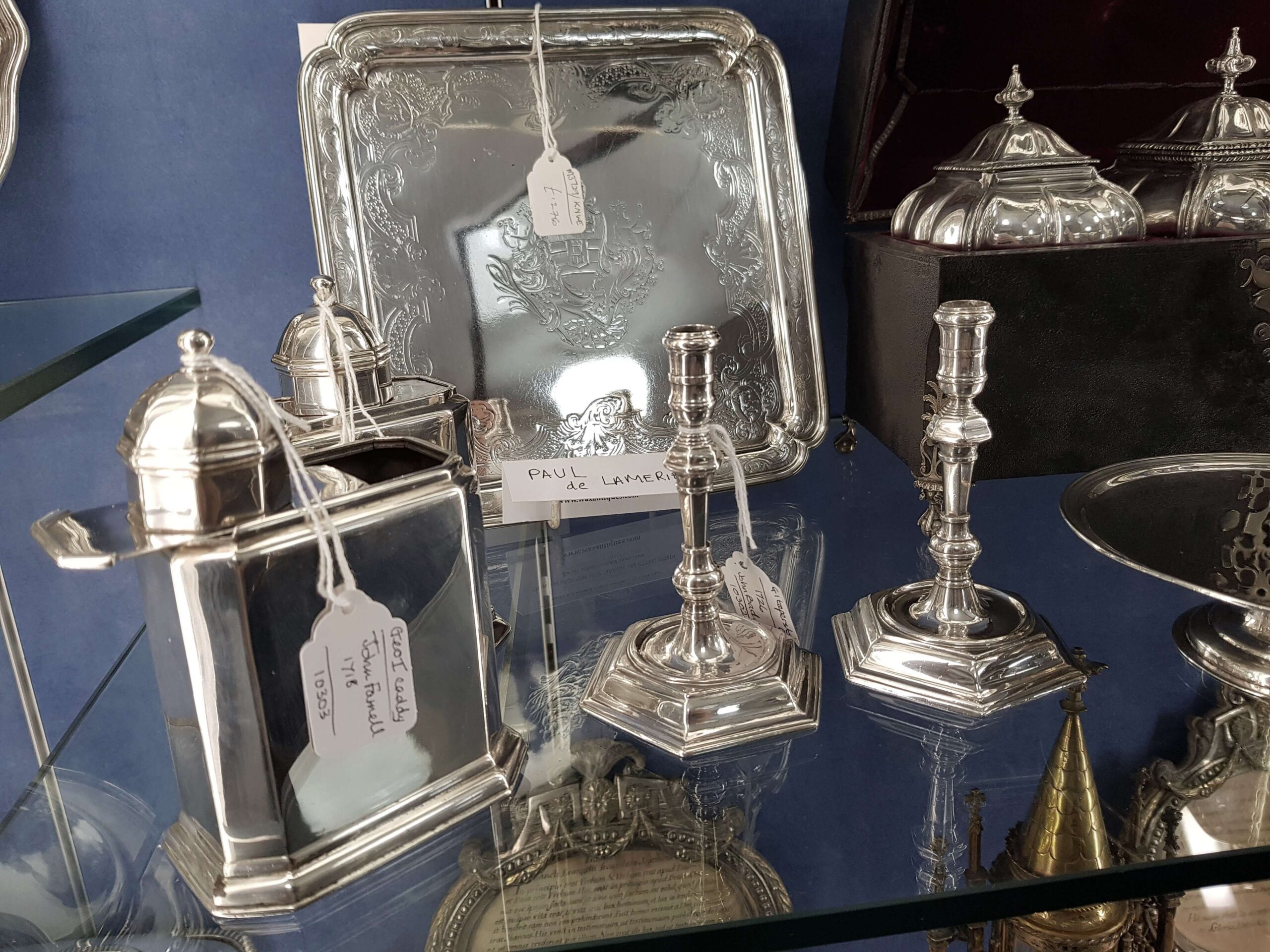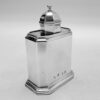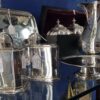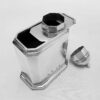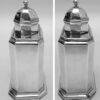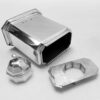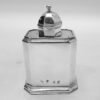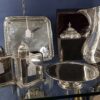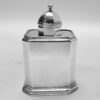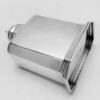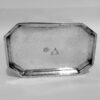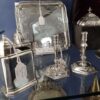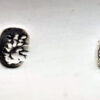George I Antique Silver Tea Caddy
SOLD
Stock: 10303
Date: 1718
Maker: John Farnell
Country: England
A good early English silver caddy of plain rectangular design with the plain hexagonal design typical of the early 1700’s....
Description
Description
A good early English silver caddy of plain rectangular design with the plain hexagonal design typical of the early 1700’s. The sliding top has a lift off cap which doubles as a tea measure.
Weight 226 grams, 7.2 troy ounces.
Height 12.6cm. Base 8.9 x 5.8cm.
London 1718.
Maker John Farnell.
Britannia standard silver – purity 95.8%*.
18th century.
This caddy is identical to #10304.
Marks. Stamped on the body close to the base with a full set of English silver hallmarks, maker’s mark repeated underneath; lid with lion mark. The owner’s initials “A” over “S S” are inscribed below.
Literature: A Tea Caddy is a box, jar, canister, or other receptacle used to store tea. The word is believed to be derived from ‘catty’, the Chinese pound, equal to about a pound and a third avoirdupois. The earliest examples that came to Europe were Chinese tea canisters in blue and white porcelain with china lids or stoppers. Tea in the early 18th Century was expensive, and also there was a tax on tea. so early tea caddies were small and made in precious materials such as silver, shagreen or tortoiseshell which reflected the valuable contents within.
*Britannia Standard. In 1696, so extensive had become the melting and clipping of coinage that the silversmiths were forbidden to use the sterling standard for their wares, but had to use a new higher standard, 95.8 per cent. New hallmarks were ordered, “the figure of a woman commonly called Britannia” and the lion’s head erased (torn off at the neck) replacing the lion passant and the leopard’s head crowned. This continued until the old standard of 92.5 per cent was restored in 1720. Britannia standard silver still continues to be produced even today and is always prized.
Condition
This lovely caddy is in very good condition. Excellent patina. Shows small signs of wear in keeping with its age. A few minor dinks.
Maker Information
Maker: John Farnell
John Farnell, London silversmith, apprenticed to John Ash 1706, free 1714. Mark entered as largeworker 1714. 2nd mark (Sterling) 1720. Livery 1728. His mark is often found on hexagonal tea caddies.
Our Guarantee
Customer satisfaction is our primary concern
All silverware on our website is checked thoroughly prior to offering it for sale and every product listing contains a condition report and details of the silver hallmarks.
All items offered on our website include:
- Free Shipping Worldwide
- Tracked and Insured
- 14 day no quibble money back guarantee
- We are accredited members of LAPADA and conform to their strict professional standards
- We dispatch 1-3 days after receiving cleared payments
More detailed information about deliveries, returns and how to pay is available in the Help section at the bottom of this page.
